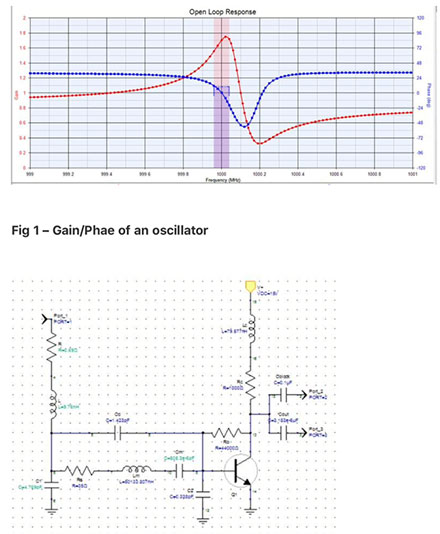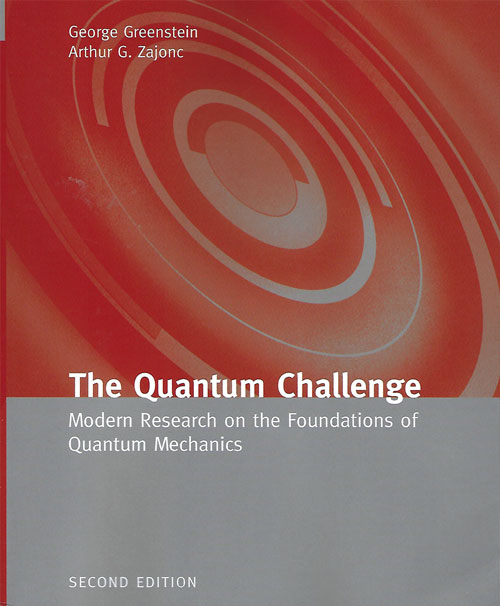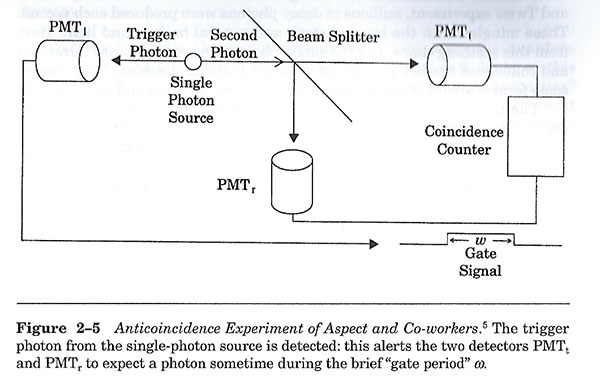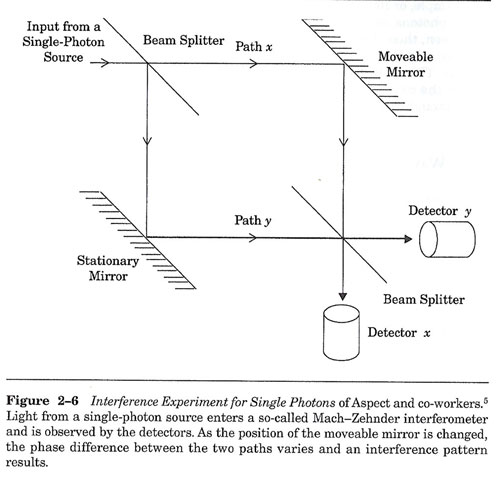Well this week we concentrate on the story about how single photons and single photon interference were detected.
But first, we received some emails commenting on the 400th blog post. Resident Astronomer Peggy, on the question of how many blog posts had actually been read, commented that she had read them all. Also Spends Part time in the Mountains, David, commented that he has probably read all of them. Alright, Peggy and David, thanks for that and I'm glad you enjoyed them!
We also received an email from reader, Telescope Still Packed in the Garage, Frank, who noticed a similarity between the resonance enhanced absorption, observed in the nanostructures, described in last August 14, 2020 post, and modern electrical oscillator circuits. Yes, if you check out the response curve for an oscillator in the plots below, the curve is very much like the previously described nanostructure resonance. Yes, it is probably to be expected because both phenomena can be described by solutions of classical Maxwell equations of electromagnetism. The mathematics describing the resonance of the nanostructures has essentially the same form as the LC resonant circuit. This emerging technology might be used to extend the operating frequency range. Of course, LC oscillators need a gain source, such as a transistor, and some means of getting gain in the nanostructure seems to be needed. Anyway, nice catch, Frank and thanks for the circuit simulation!
 |
| Electrical oscillator and nanostrucure filters share Maxwell equation solutions (Source: Telescope packed in garage, Frank) |
This week I had time to have a physics luncheon with Visionary Physicist, Dr. Don. After some physics discussion along with a few celebratory margaritas, we were talking about the nature of quantum mechanics and I wanted to recall one story about how photons were actually discovered or found. I couldn't quite remember all of the details of the story so I assigned that as my homework for the week. Thanks for reminding me to lookup the details of the story, Don!
Let's review that story about trying to find photons that I recall reading about while attending the AAS 235th meeting in Hawaii. The story is told very well in the book, "The Quantum Challenge" by George Greenstein and Arthur Zajonk. This is one of the best books that tells a more gentle story about the foundations of quantum mechanics. This blog post covers just what the text describes in Chapter 2 and there are 7 more interesting topics and chapters.
 |
| Excellent book on foundations of quantum mechanics (Source: G. Greenstein & A. Zajonk, "The Quantum Challenge") |
We normally associate the discovery of the photon with the photoelectric effect as described by Einstein. But there was still some doubt as to the existence of the photon and other physicists, like Lamb and Scully, who treated light as a classical electromagnetic wave and the detector as a quantum device, and they were able to also successfully explain the results of the photoelectric effect. So, maybe the photon was not necessary after all. As the story continues, it was the experimental investigation by Hanbury-Brown and Twiss that we turn to next and they attempted to detect individual photons.
In the following experimental setup, a low intensity light beam, which was supposed to consist of just a very small number of photons per second on a beam splitter after which two detectors were used to measure the photons arriving after travelling though separate paths. The thought was that if the light beam consisted of a bunch of photons that the detector would just report that fact and both detectors would not click at the same time because the single photo would go down one path from the beam spltter and would not split into two separate particles.
 |
| Excellent book on foundations of quantum mechanics (Source: G. Greenstein & A. Zajonk, "The Quantum Challenge") |
So, what happened when they actually performed this experiment? Well, the coincidence counter counted way too many instances of simultaneous detection when theory of individual photons would have predicted exactly zero coincidences. Rather than disprove the existence of photons, what later analysis revealed was that the incoming beam of photons was not uniformly distributed, but instead arrived in bunches and the closely spaced in time bunches fell within the timing limits of the coincidence counter. So, the experiment detected the nonuniform bunching of photons from the light source used and didn't indicate anything about the nature of individual photons.
So what to do? It turns out that a better source was discovered that would provide just one photon at a time and an indicator that one photon had been produced. Check out the situation below where a Calcium atom is excited by a laser beam and when the atom decays back to its ground state, two photons are released. Now one of these photons can be used to indicate that the other photon is on its way to the detector. This photon source can now be used in an experiment to evaluate whether or not single photons are being detected.
 |
| A Single Photon Source (Source: G. Greenstein & A. Zajonk, "The Quantum Challenge") |
Ok, so now we can check out how this new photon source is used to verify the single photon hypothesis. The low intensity beam of photons from this new source is now directed to the same type of beam splitter and coincidence counter used in the previous example. But now, we have access to the trigger photon from the calcium atom to gate the coincidence counter so that coincidence is only to be measured at very close to the same time as the trigger photon is produced. This way enables the experiment to remove the effects of bunches of photons that resulted in the null detection of single photons in the previous experiment.
So, what happened? Hooray, the experimenters found no coincident counts. This was the first time that single photons were detected. The photon is real. Pretty neat!
 | |
|
The experimental setup in the figure below is a form of an interferometer called a Mach-Zehnder interferometer. The beam of single photons at a time, as established by the previously discussed source, hits a beam splitter and the photon is then directed down one of two separate paths. The paths are directed by mirrors to eventually impinge on another beam splitter. Now you might think, if you think classically, that the photon would just be detected by one or the other detectors. But something more strange occurs and to explain the results of the experiment calls for some quantum mechanical thinking, not classical thinking.
 | |
|
The chart below shows what is observed as many photons, one at a time, are sent into the interferometer and the adjustable mirror is moved. You can see that the number of counts received by either the Dx or Dy detector is no a function of the setting of the adjustable mirror. Somehow, the photon, arriving just one at a time, knows or is affected by the setting of the adjustable mirror. It is as if the photon traveled both paths at the same time. This is pretty strange! But, if you want to calculate and predict the outcome of the experiment, you just assume the photon travels down both paths and calculate what the effect of that is when it reaches the final beam splitter.
 |
| Interference of single photons somehow going separate paths (Source: G. Greenstein & A. Zajonk, "The Quantum Challenge") |
So, in some strange way, we can calculate and get the right answer by assuming the photon goes down both paths, even though in the previous experiment, the photon was detected and observed to just take one or the other paths out of the first (only) beam splitter in the setup. Strange, but it works! Now if you enjoyed this summary of chapter 2 of the book, "The Quantum Challenge" you might enjoy the other chapters, which deal with other quantum mysteries and the experimental approaches used to evaluate them!
Until next time,
Resident Astronomer George
Be sure to check out over 400 other blog posts on similar topics
If you are interested in things astronomical or in astrophysics and cosmology
Check out this blog at www.palmiaobservatory.com

No comments:
Post a Comment